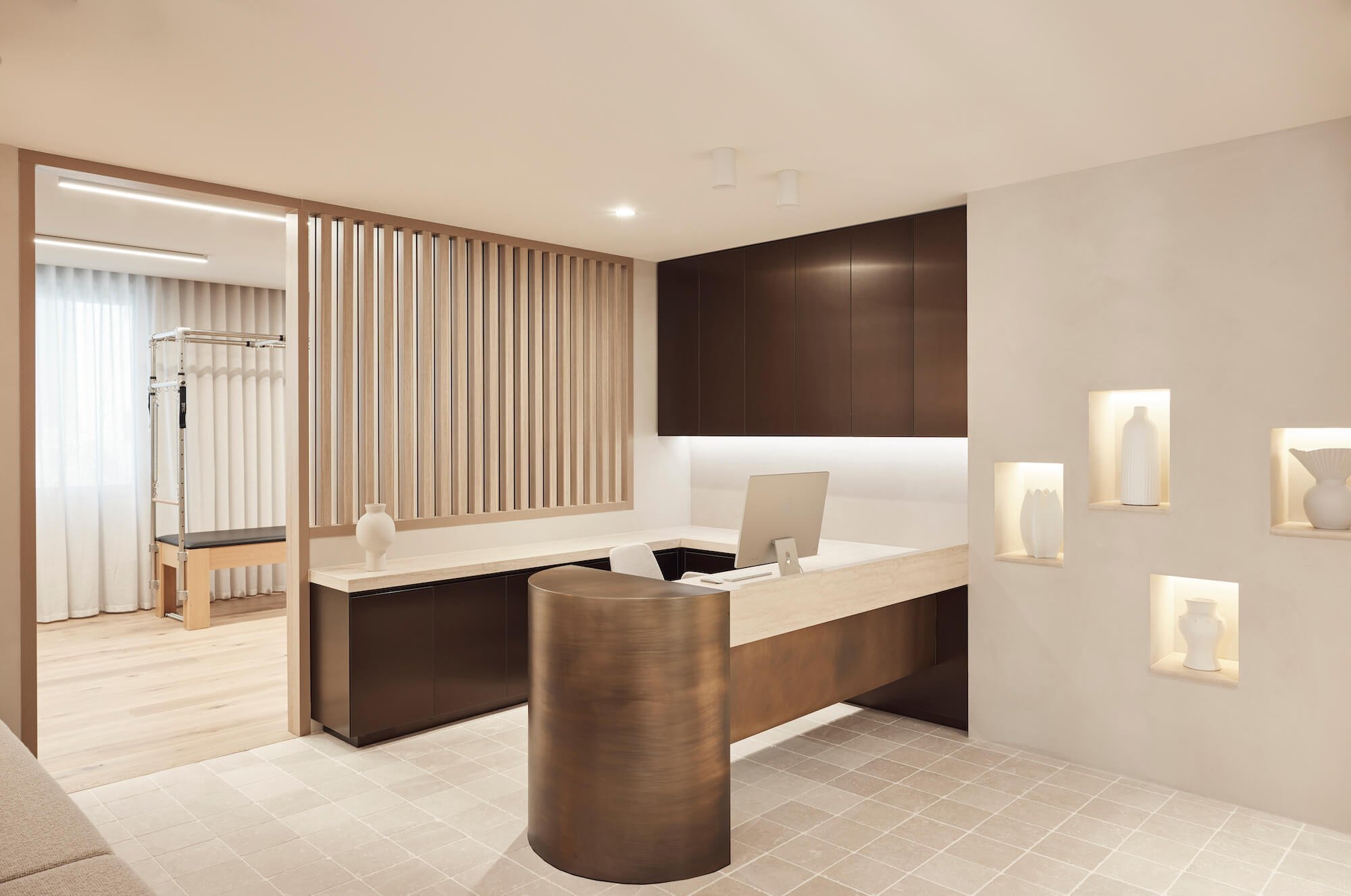How to Plan a New Office Fit-Out and Joinery
When planning a new office fit-out, you’re not just designing a workspace—you’re creating an environment that reflects your business, enhances productivity, and makes the most of your available space. Joinery is an integral part of this transformation, providing custom-built solutions that improve both functionality and aesthetics. At iSpace Solutions, we have extensive experience helping businesses develop tailored office fit-outs. Below is a comprehensive guide to help you plan your fit-out…
1. Define Your Office Needs
Before any design work begins, it’s essential to clearly understand how your office will be used on a daily basis by mapping out the core functions your workspace needs to support. For example, does your team rely on collaboration, requiring large, open-plan areas with communal tables or meeting pods? Or is privacy key to productivity, where individual workstations or partitioned desks are necessary? To define your office needs for a fit-out, asking the right questions is crucial to ensure the design aligns with your business operations and goals. Here are some key questions to consider:
1. What is the purpose of each space in your office?
Do you need open-plan areas for collaboration, or are private offices more important for focus work?
Are there spaces needed for client-facing activities, such as meeting rooms or a reception area?
2. How many employees do you have, and is this number expected to grow?
How much space is required for each employee? Should workstations be fixed or adaptable to growth or changes in team size?
Do you need to plan for expansion in the near future?
3. What technology and equipment are essential to your operations?
What kind of technology infrastructure do you need? Consider power outlets, data points, and server/storage rooms.
Do you need specialised storage or dedicated spaces for equipment, such as printers, projectors, or technical gear?
4. What are your storage requirements?
How much physical storage space will you need for files, office supplies, or products?
Will you need secure or lockable storage for sensitive information or equipment?
5. What are the key pain points in your current office setup?
Are there any inefficiencies or areas of frustration in the current space, such as poor lighting, lack of privacy, or insufficient storage?
How can the new fit-out address these issues to improve workflow and employee satisfaction?
6. How do your employees work best?
Do your employees prefer collaborative working environments, or do they require quiet spaces for deep focus?
Would flexible workspaces, such as hot-desking or standing desks, be beneficial?
7. What kind of meeting spaces do you need?
Do you require large boardrooms, small meeting rooms, or more informal breakout areas for brainstorming and quick discussions?
How often do you host client meetings, and do these require dedicated areas?
8. How important is branding and design to your office?
Should the office design reflect your company’s branding, culture, and values? If so, how prominently?
What kind of materials, colours, or design elements are necessary to communicate your brand’s identity?
9. What are your budget and timeline constraints?
What is your budget for the fit-out, and where are you willing to invest more versus where you may need to cut back?
What is the expected timeline for the project, and are there any deadlines, such as a lease start date or an important client visit, that you need to consider?
10. Do you have any specific regulatory or safety requirements?
Are there any industry-specific regulations that need to be considered, such as safety standards, fire codes, or accessibility requirements?
Will the office need to accommodate employees with disabilities or other special considerations?
By addressing these questions, you’ll gain a clearer understanding of how the space should function, what features are essential, and how to plan for future needs. Once these needs are identified, custom joinery—such as shelving, built-in cabinetry, or workstation designs—can be tailored to seamlessly integrate with your office layout, ensuring that the fit-out supports both day-to-day operations and long-term business goals. This thoughtful planning guarantees that the final design is not only aesthetically pleasing but also efficient and practical.
2. Maximise Space with Bespoke Joinery
One of the key advantages of custom joinery is its ability to maximise every square metre of your office. Standard, off-the-shelf furniture often fails to fully utilise awkward spaces like alcoves, corners, or underutilised wall areas. With bespoke joinery, these areas can be transformed into functional parts of your office—whether that means building custom cabinets, shelving, or desk solutions that fit the space perfectly.
For example, a common problem in offices is cable clutter and inadequate storage. With custom joinery, we can design desks with integrated cable management solutions or create wall-mounted cabinets to keep equipment neatly stored and out of sight. These custom solutions help eliminate clutter, making the office feel more spacious and organised.
Maximising space isn’t just about cramming as much as possible into an office—it’s about designing smart, multifunctional pieces that serve multiple purposes. We often create modular furniture that can be easily reconfigured or moved to adapt to changing needs. This not only makes the office more flexible but ensures that every piece of joinery serves a specific function, keeping the space streamlined and efficient.
3. Align with Your Brand
Your office space is a direct extension of your brand, and it should reflect your company’s identity and culture. A well-designed fit-out can reinforce the message your business conveys to clients, employees, and visitors alike. Custom joinery offers a great opportunity to personalise your office design, creating a workspace that aligns with your brand values and aesthetic.
For instance, if your brand is sleek and modern, we can design joinery with minimalist lines, smooth finishes, and materials like glass or metal. On the other hand, if you prefer a more welcoming, traditional look, timber joinery with warm finishes and textured surfaces can create a more inviting atmosphere. Even small details like the colour of cabinetry, the style of shelving, or the choice of hardware can make a big difference in reinforcing your brand image.
In client-facing areas such as reception desks, meeting rooms, or boardrooms, this is especially important. These spaces are often the first impression visitors have of your business, so it’s essential that the design reflects your professionalism and style. Custom joinery can elevate these spaces, helping you leave a lasting impression on clients and partners.
4. Focus on Functionality
A well-designed office isn’t just about aesthetics—it’s about ensuring that the space works well for your employees. Functionality should always be at the forefront of your planning process, and custom joinery can play a critical role in achieving this.
Bespoke joinery solutions are designed to enhance day-to-day operations, making sure that everything is easily accessible and organised. For example, consider the storage requirements for your team. Do you need to store a large volume of paperwork or equipment? Custom cabinetry can be tailored to fit exactly what you need to store, from documents and office supplies to technical equipment or even personal items for employees.
Ergonomics are another key consideration in office functionality. The design of desks, chairs, and workstations can significantly impact employee comfort and productivity. Custom joinery allows you to create workstations that are designed with ergonomics in mind, helping employees stay comfortable throughout the day. Whether it’s desks at the right height, integrated standing desks, or adjustable shelving, the focus is on creating an office that makes work easier and more enjoyable.
5. Plan for Flexibility
In today’s fast-changing work environment, flexibility is key. Businesses grow, teams expand, and technology evolves—your office needs to be able to adapt to these changes without requiring a complete redesign every time. When planning your fit-out, consider how your office space might need to change in the future and how joinery can be designed to accommodate these shifts.
Modular furniture and moveable partitions are excellent examples of flexible design solutions. These elements can be reconfigured as needed, allowing you to easily adapt your office layout to suit changes in team size, work styles, or operational needs. For instance, desks and workstations can be designed to be adjustable or easily relocated, while partition walls can be added or removed to create more private or open spaces as required.
At i space, we understand that the modern office needs to evolve with your business. That’s why we emphasise creating flexible, adaptable joinery that can grow with your team and respond to your changing needs without sacrificing design or functionality.
6. Collaborate with Experts
A successful office fit-out requires collaboration between multiple experts. At i space, we work closely with designers, architects, and clients to ensure that every detail of the fit-out—from the layout to the joinery design—comes together perfectly. This collaborative approach allows us to provide comprehensive solutions that not only look good but also function well in the day-to-day operations of your business.
Working with experienced professionals also ensures that the design is practical and feasible. For example, while certain materials or designs might look great on paper, they may not always be the best choice for high-traffic areas or spaces with specific functional needs. Our team is here to guide you through these decisions, offering insights and recommendations that will result in a fit-out that’s both beautiful and long-lasting.
7. Connect
A well-planned office fit-out is an investment in your business’s future, and custom joinery plays a crucial role in creating a workspace that is functional, efficient, and reflective of your brand. By taking the time to assess your office needs, maximise space, and plan for future flexibility, you’ll create an environment that not only looks great but also improves productivity and employee satisfaction. At i space, we are committed to delivering tailored office solutions that help your business thrive. Contact i space today to discuss how our custom joinery can transform your office space.




